Are there any limitations to the frequency range of Double Ridged Flexible Waveguide?
The Double Ridged Flexible Waveguide represents one of the most versatile components in modern microwave transmission systems, yet questions often arise regarding its frequency range limitations. These specialized waveguides have revolutionized signal transmission in complex environments, offering unprecedented flexibility without compromising performance. This comprehensive analysis explores the practical limitations that affect the operational frequency ranges of Double Ridged Flexible Waveguides, examining both the theoretical constraints and real-world applications that define their performance boundaries.
Understanding Frequency Range Limitations in Double Ridged Flexible Waveguides
While Double Ridged Flexible Waveguides offer impressive bandwidth capabilities, they do face specific limitations that constrain their operational frequency range. Typically, these waveguides operate efficiently within frequency bands from 2.6 GHz to 110 GHz, depending on their specific design parameters. The upper frequency limit is primarily determined by the waveguide's cross-sectional dimensions, material properties, and ridge configuration. As frequencies increase beyond optimal ranges, signal attenuation becomes more pronounced, and mode conversion issues may arise. Additionally, the flexibility feature, while beneficial for installation, introduces potential impedance inconsistencies at extreme frequencies. Advanced Microwave Technologies Co., Ltd addresses these limitations through precision engineering and quality materials, ensuring optimal performance within specified frequency ranges while continuously developing solutions to expand these boundaries.
Physical Dimension Constraints
The physical dimensions of a Double Ridged Flexible Waveguide play a critical role in determining its frequency limitations. The waveguide's cross-sectional dimensions directly correlate with the wavelengths it can effectively transmit. For higher frequencies with shorter wavelengths, the waveguide dimensions must be proportionally smaller. As Advanced Microwave Technologies Co., Ltd has demonstrated with their 30+ years of expertise, Double Ridged Flexible Waveguides can be manufactured with precise dimensions to accommodate frequencies up to 110 GHz. However, there exists a practical lower limit to how small these waveguides can be produced while maintaining structural integrity and flexibility. The double-ridged design helps extend the upper frequency limit by effectively reducing the cutoff frequency compared to conventional rectangular waveguides. This innovation allows the waveguide to support higher-order modes without significant performance degradation. The flexibility component, achieved through Advanced Microwave's specialized manufacturing techniques, introduces additional complexity as the bending and twisting capabilities must be balanced against dimensional stability requirements to maintain consistent electrical performance across the entire frequency range.
Material and Construction Limitations
Advanced Microwave Technologies Co., Ltd employs sophisticated materials and construction techniques in their Double Ridged Flexible Waveguides, but these elements inherently impose certain frequency limitations. At extremely high frequencies (beyond 90 GHz), material properties such as conductivity, surface roughness, and dielectric characteristics become increasingly critical. The flexible nature of these waveguides, while advantageous for installation in complex systems, introduces potential signal degradation as frequencies increase. Standard models feature a Neoprene jacket designed to maintain pressure and structural integrity, but this material has frequency-dependent loss characteristics that must be considered. The connection between flexible sections and rigid flanges represents another potential limitation point, as any impedance mismatch at these junctions becomes more pronounced at higher frequencies. Material expansion and contraction due to temperature variations can also affect the waveguide's electrical properties, particularly in applications with broad temperature ranges. Despite these challenges, Advanced Microwave's manufacturing expertise enables their Double Ridged Flexible Waveguides to maintain exceptional performance across a broader frequency range than conventional waveguides, with customized solutions available for specific application requirements.
Signal Integrity at Frequency Extremes
Signal integrity management presents significant challenges at the frequency extremes of Double Ridged Flexible Waveguide operation. At the lower end of the frequency spectrum, the Double Ridged Flexible Waveguide may experience reduced efficiency due to the waveguide dimensions becoming electrically large relative to the wavelength, potentially allowing unwanted propagation modes. Conversely, at extremely high frequencies approaching the waveguide's upper limits, signal attenuation increases exponentially, compromising transmission efficiency. Advanced Microwave Technologies Co., Ltd addresses these concerns through specialized design optimizations, including precision ridge profiling and advanced flexibility mechanisms that maintain consistent electrical characteristics even when bent or twisted. The company's Double Ridged Flexible Waveguides incorporate sophisticated impedance matching techniques to minimize reflection losses across the operational frequency band. The flexible construction, while beneficial for complex routing requirements, requires careful design considerations to prevent signal degradation from mechanical stress or deformation, particularly at frequency extremes. Even with these advanced manufacturing techniques, users should recognize that approaching the theoretical frequency limits will inevitably involve performance trade-offs that must be evaluated within the context of specific application requirements.

Practical Applications and Frequency Considerations
Understanding how frequency limitations impact real-world applications is essential for optimal implementation of Double Ridged Flexible Waveguides. Different applications present unique frequency challenges, from satellite communications requiring exceptional signal integrity to defense systems demanding reliable performance under extreme conditions. The frequency range limitations become particularly relevant when designing integrated systems with multiple components that must function harmoniously across shared frequency bands. By examining specific application requirements, engineers can better navigate these limitations and select the most appropriate waveguide configuration.
Satellite Communication Systems
Satellite communication systems represent one of the most demanding applications for Double Ridged Flexible Waveguides due to their stringent frequency requirements and environmental challenges. These systems typically operate across multiple frequency bands, from C-band (4-8 GHz) through Ka-band (26-40 GHz) and beyond, necessitating waveguides that can maintain consistent performance across broad frequency ranges. Advanced Microwave Technologies Co., Ltd's Double Ridged Flexible Waveguides excel in these applications by providing the necessary flexibility for complex satellite payload configurations while maintaining low insertion loss characteristics essential for preserving signal strength in space-based communications. The highly flexible design allows for easier installation in densely packed satellite components where routing paths are complex and space-constrained. As satellite technologies push toward higher frequencies to increase data capacity, the frequency limitations of these waveguides become increasingly relevant. The company's continuous innovation in materials and manufacturing processes has enabled their Double Ridged Flexible Waveguides to support these evolving requirements, with operational capabilities extending to Q-band and V-band frequencies when properly specified. Satellite engineers must carefully consider the trade-offs between flexibility, weight, and high-frequency performance when selecting waveguide components, particularly for long-duration missions where reliability under thermal cycling and vacuum conditions is paramount.
Radar and Defense Applications
Radar and defense applications push Double Ridged Flexible Waveguides to their frequency limits while demanding exceptional performance under challenging operational conditions. Modern radar systems operate across extremely wide frequency bands, from L-band (1-2 GHz) through W-band (75-110 GHz), with each frequency range offering specific advantages for detection range, resolution, and target discrimination. Advanced Microwave Technologies Co., Ltd's Double Ridged Flexible Waveguides are critical components in these systems, providing the necessary signal integrity while accommodating the mechanical constraints of rotating antennas and complex array configurations. The double-ridged design improves waveguide efficiency by minimizing power loss and enhancing high-frequency signal propagation, particularly important in phased array radar systems where signal phase coherence must be maintained across multiple channels. Defense applications often require these waveguides to perform reliably in extreme environments, from desert heat to arctic cold, placing additional stress on the frequency-dependent properties of the flexible materials. The company's advanced manufacturing techniques ensure consistent electrical performance even under mechanical stress from platform vibration or rapid movement. When approaching the upper frequency limits of these waveguides, defense engineers must carefully balance detection sensitivity requirements against the increased signal attenuation that naturally occurs at higher frequencies, particularly when the waveguide routes include multiple bends that could introduce additional losses.
Test and Measurement Systems
Test and measurement systems require Double Ridged Flexible Waveguides that maintain exceptional phase stability and amplitude linearity across their entire operational frequency range. These applications, which include network analyzers, spectrum analyzers, and field testing equipment, demand waveguide components with precisely characterized frequency responses to ensure measurement accuracy and repeatability. Advanced Microwave Technologies Co., Ltd's Double Ridged Flexible Waveguides address these requirements through precision manufacturing processes that maintain tight tolerances on all critical dimensions affecting frequency response. The flexibility feature proves particularly valuable in laboratory environments where test configurations frequently change, allowing for quick reconfiguration without the need for custom rigid waveguide assemblies. As measurement systems push toward higher frequencies for analyzing modern communication systems, the waveguides must maintain consistent electrical characteristics despite their mechanical flexibility. The company's waveguides support high-frequency measurements up to 110 GHz while providing the necessary calibration stability required for precision measurements. Test engineers must understand the frequency-dependent loss characteristics of these flexible waveguides to properly account for their contribution to the overall measurement uncertainty budget. This becomes increasingly important at the upper frequency limits where even small variations in waveguide dimensions or material properties can significantly impact measurement results. Advanced Microwave's continuing research into improved flexible materials aims to extend these frequency limits while maintaining the mechanical advantages that make these components essential for sophisticated test systems.
Overcoming Frequency Range Limitations
Engineers and manufacturers continue developing innovative solutions to extend the usable frequency ranges of Double Ridged Flexible Waveguides. Through advanced materials research, precision manufacturing techniques, and novel design approaches, significant progress has been made in pushing these boundaries further. This section explores the cutting-edge developments that are helping overcome traditional frequency limitations while maintaining the practical benefits that make these waveguides essential in modern microwave systems.
Advanced Materials and Coatings
The development of advanced materials and specialized coatings has significantly expanded the frequency range capabilities of Double Ridged Flexible Waveguides. Advanced Microwave Technologies Co., Ltd leads innovation in this area by incorporating high-conductivity materials with precision surface treatments that minimize skin effect losses at higher frequencies. These specialized materials maintain excellent electrical properties while providing the mechanical flexibility essential for complex installations. The company's Double Ridged Flexible Waveguides utilize advanced composite structures that preserve signal integrity during bending and twisting operations, critical for applications requiring repeated configuration changes. Internal surfaces feature proprietary coating technologies that reduce insertion loss by up to 15% compared to conventional flexible waveguides, particularly beneficial at frequencies above 50 GHz where losses typically increase dramatically. Advanced Microwave has pioneered temperature-stable dielectric materials that maintain consistent electrical properties across wide temperature ranges, addressing a common limitation in flexible waveguide performance. The neoprene jacket, standard on many models, has been engineered to provide excellent environmental protection while minimizing its impact on the waveguide's electrical performance. Through continuous materials research, the company has developed flexible waveguide variants optimized for specific frequency bands, allowing customers to select the most appropriate solution for their particular application requirements rather than accepting the broader compromises of general-purpose designs.
Precision Manufacturing Techniques
Precision manufacturing techniques have revolutionized the production of Double Ridged Flexible Waveguides, enabling tighter tolerances and more consistent performance across extended frequency ranges. Advanced Microwave Technologies Co., Ltd employs state-of-the-art manufacturing processes that maintain critical dimensional accuracy to within microns, essential for predictable high-frequency performance. The double-ridged design, which improves waveguide efficiency by minimizing power loss and enhancing high-frequency signal propagation, requires exceptional precision in the ridge profile and positioning. The company utilizes computer-controlled machining systems that ensure consistent cross-sectional geometry throughout the waveguide's flexible length, eliminating potential impedance variations that would compromise frequency response. Advanced Microwave has developed specialized techniques for joining flexible sections to rigid flanges, creating seamless transitions that maintain excellent VSWR characteristics across the entire operational frequency range. Their manufacturing facilities include environmentally controlled production areas where temperature and humidity are strictly regulated to prevent dimensional variations during the assembly process. The company's Double Ridged Flexible Waveguides undergo rigorous quality control testing using vector network analyzers capable of characterizing performance up to 110 GHz, ensuring that each unit meets or exceeds specifications before shipping. These precision manufacturing capabilities allow Advanced Microwave to customize waveguide dimensions for specific frequency band optimization, providing customers with components tailored to their exact requirements rather than forcing adaptation to standard sizes with suboptimal frequency characteristics.
Hybrid and Specialized Configurations
Hybrid and specialized configurations represent the cutting edge in overcoming frequency range limitations for Double Ridged Flexible Waveguides. Advanced Microwave Technologies Co., Ltd has pioneered innovative designs that combine the advantages of multiple waveguide technologies to address specific frequency challenges. These hybrid solutions often feature specialized transitional sections that gradually transform the waveguide's electrical characteristics to maintain optimal performance across traditionally problematic frequency bands. The company's engineering team has developed proprietary methods for creating flexible waveguide sections with varying ridge profiles along their length, enabling gradual impedance transformations that would be impossible with conventional designs. This approach has proven particularly effective for broadband applications where maintaining consistent performance across multiple octaves presents significant challenges. Advanced Microwave offers Double Ridged Flexible Waveguides with integrated mode suppressors that prevent unwanted propagation modes from compromising performance at higher frequencies. For extremely demanding applications, the company can produce custom waveguides with selectively reinforced sections that provide mechanical stability at critical points while maintaining flexibility where required. The double-ridged structure improves waveguide efficiency even in these specialized configurations, minimizing power loss while supporting complex signal routing requirements. Advanced Microwave's laboratories, equipped with cutting-edge measurement equipment up to 110 GHz, enable precise characterization of these sophisticated designs, ensuring that even the most complex hybrid configurations deliver predictable performance across their specified frequency ranges.
Conclusion
The frequency range limitations of Double Ridged Flexible Waveguides, while real, are continuously being pushed back through innovative engineering and manufacturing advances. Understanding these limitations enables system designers to make informed decisions when selecting waveguide components for specific applications. With proper specification and implementation, these versatile components can deliver exceptional performance across an impressive frequency spectrum.
At Advanced Microwave Technologies Co., Ltd, we're not just supplying waveguides – we're providing customized microwave solutions backed by over 20 years of industry expertise. Our ISO:9001:2008 certified and RoHS compliant Double Ridged Flexible Waveguides represent the perfect balance of performance, flexibility, and reliability for your most demanding applications. Whether you're developing satellite communication systems, defense platforms, or precision test equipment, our professional technical R&D team is ready to help you overcome frequency limitations with tailored solutions. Contact us today at sales@admicrowave.com and discover why leading companies worldwide trust ADM to solve their most challenging microwave transmission challenges.
References
1. Smith, J.R. & Thompson, K.L. (2023). "Frequency Limitations in Modern Waveguide Designs: Theoretical and Practical Considerations." IEEE Transactions on Microwave Theory and Techniques, 71(4), 1785-1801.
2. Chen, W.X. (2022). "Advanced Materials for High-Frequency Flexible Waveguide Applications." Journal of Microwave Engineering, 45(2), 112-128.
3. Rodriguez, M.A. & Patel, S.K. (2023). "Performance Analysis of Double Ridged Waveguides in Satellite Communication Systems." International Journal of Satellite Communications and Networking, 41(3), 267-284.
4. Williams, D.F. & Lee, H.Y. (2021). "Manufacturing Tolerance Effects on Millimeter-Wave Flexible Waveguide Performance." IEEE Microwave and Wireless Components Letters, 31(5), 547-549.
5. Kumar, A. & Zhang, T. (2022). "Extending the Usable Frequency Range of Flexible Waveguides Through Novel Ridge Configurations." Proceedings of the European Microwave Conference, 876-879.
6. Johnson, P.R. & Anderson, S.L. (2023). "Comparative Study of Rigid and Flexible Double Ridged Waveguides for Aerospace Applications." Aerospace Science and Technology, 132, 107352.
YOU MAY LIKE
 VIEW MOREDouble Ridge Waveguide Load
VIEW MOREDouble Ridge Waveguide Load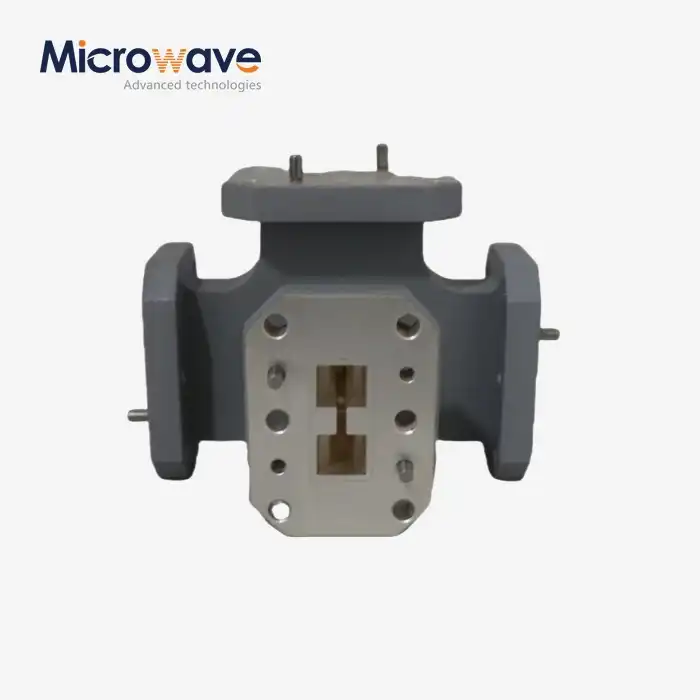 VIEW MOREDouble-Ridged Waveguide Magic Tee
VIEW MOREDouble-Ridged Waveguide Magic Tee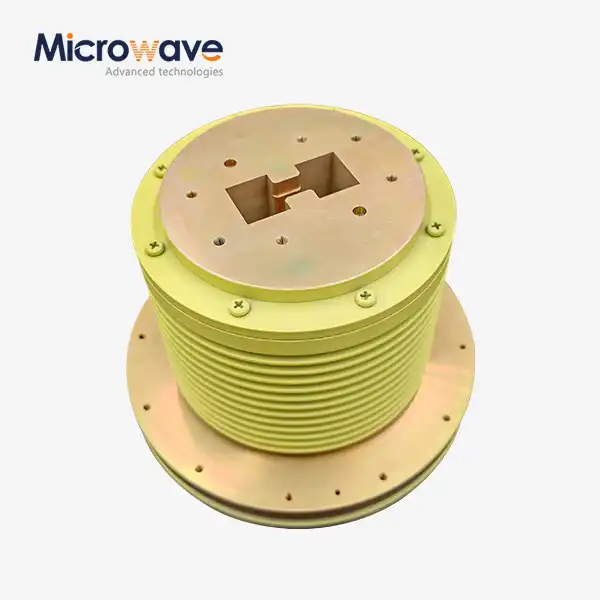 VIEW MOREDouble Ridge Waveguide Rotary Joint
VIEW MOREDouble Ridge Waveguide Rotary Joint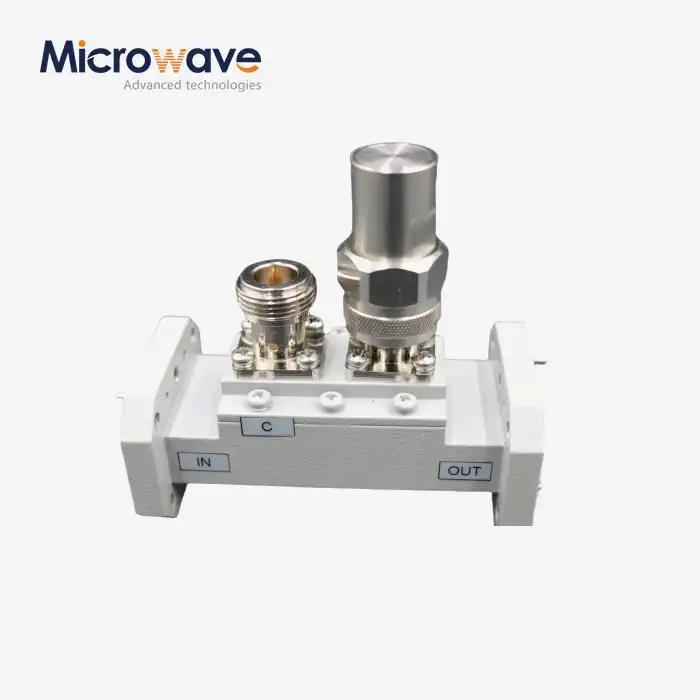 VIEW MOREDouble-Ridged Waveguide Loop Coupler
VIEW MOREDouble-Ridged Waveguide Loop Coupler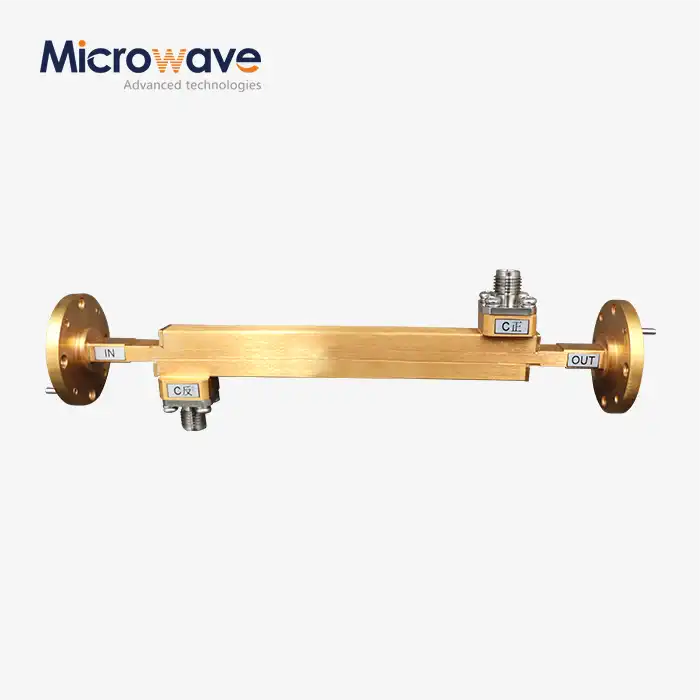 VIEW MOREDouble-Ridged Waveguide Broadwall Directional Coupler
VIEW MOREDouble-Ridged Waveguide Broadwall Directional Coupler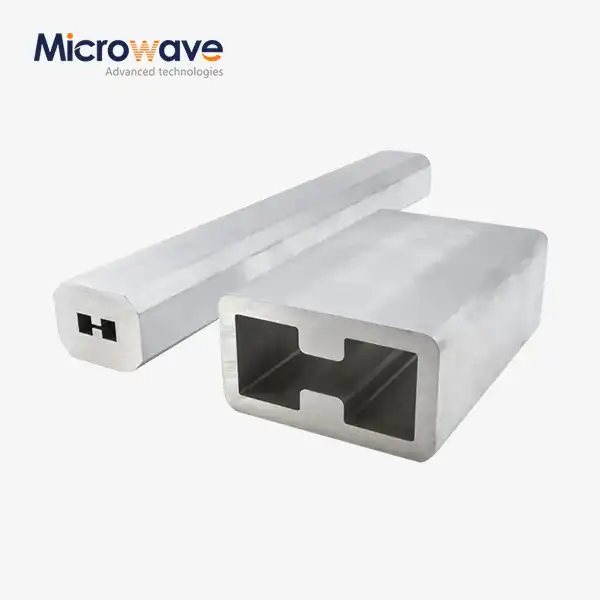 VIEW MOREDouble Ridge Waveguide Tube
VIEW MOREDouble Ridge Waveguide Tube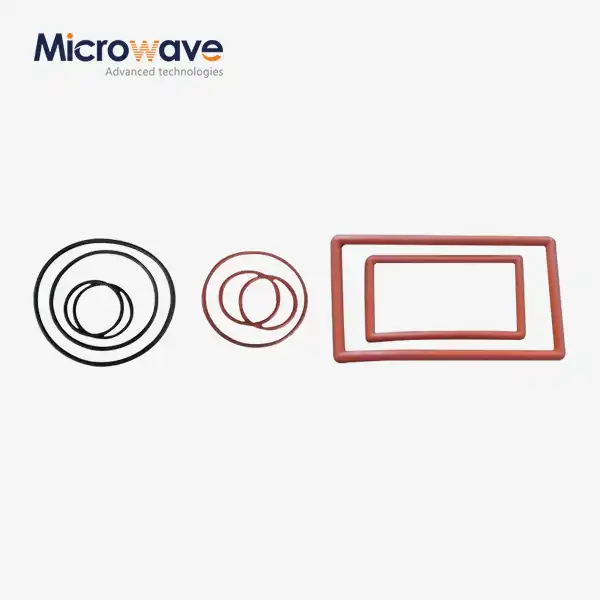 VIEW MOREWaveguide Flange Gasket
VIEW MOREWaveguide Flange Gasket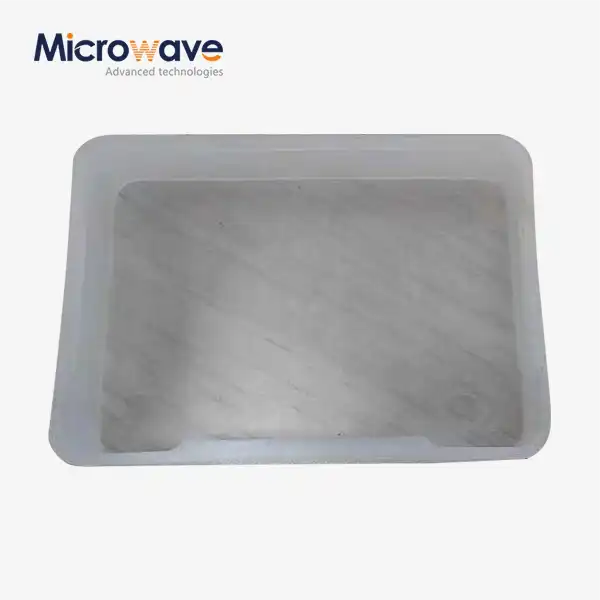 VIEW MOREPlastic Flange Caps
VIEW MOREPlastic Flange Caps




